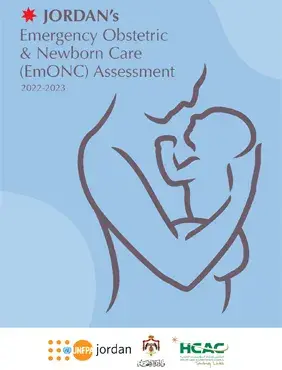Jordan conducted the first ever comprehensive Emergency Obstetric and Newborn Care (EmONC) assessment in August 2022. The primary objective of the assessment was to generate evidence on the current availability, utilization, and quality of EmONC services in the country. The assessment provides insightful information on the availability of infrastructure, equipment, essential drugs, and supplies; the range of practices related to user fees; availability and current EmONC practices of Human Resources; quality of care and documentation of use of partographs, caesarean deliveries, maternal and newborn morbidities; geographic availability of critical services; status of routine and emergency obstetric and newborn services; availability and use of records for Maternal and newborn health (MNH) services; and the referral system.
The 2022 Jordan EmONC assessment was a national cross-sectional facility-based assessment. A census of all public and private hospitals and a health center that provided maternity services in the last 12 months prior to the assessment, were included in this assessment. A total of 66 public and private hospitals and a health center were assessed. The data collection was held from August 01– October 31, 2022 in all the governorates of the country. Data cleaning and preliminary analysis were done in the last two months of the 2022. A total of 15 data collectors with a minimum qualification of health background participated in the assessment. The data collectors and team leaders received a four-day training that included practical sessions, role plays, and field level pilot testing, and they worked in teams of two with one of them serving as a team leader.
The data analysis for this report used frequencies, percentages, and rates/ratios. In addition, the report accommodates analysis results using graphs and maps to see the distribution of indicators in the country. Tables are found both in the body of the report and in the appendix (A) for further reference to details. The analysis was mostly done by region, facility type, ownership of facilities, and location (urban and rural); and in some instances, by EmONC status and governorates.


